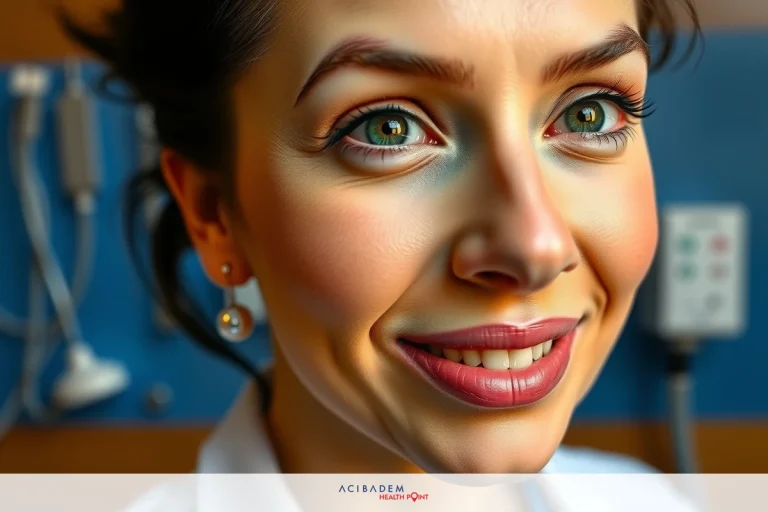Why Does My Nose Look Piggy After Rhinoplasty
Why Does My Nose Look Piggy After Rhinoplasty Rhinoplasty, often colloquially termed a ‘nose job’, holds the potential to alter one’s facial aesthetics. Yet, post-operative outcomes may sometimes produce unexpected appearances – such as a piggy nose. This phenomenon arises from various factors: the surgical technique employed, individual healing patterns, or perhaps even an unanticipated response to surgery.
Prevention and management strategies are available for those facing this issue. Proactive consultation with your surgeon prior to rhinoplasty can help set realistic expectations and outline preventive measures against unwanted results like the piggy nose appearance. Post-operatively, adherence to recovery protocols and timely follow ups play an integral role in achieving desired aesthetic outcomes.
Understanding these aspects is crucial for anyone considering rhinoplasty or dealing with its aftermath. Through this comprehensive guide on causes of piggy nose appearance after rhinoplasty and ways of managing it effectively coupled with helpful tips for smooth recovery process provides individuals contemplating about cosmetic surgeries better insights into their decision making.
Causes of Piggy Nose Appearance
Rhinoplasty is a complex cosmetic surgery that requires precise surgical technique and meticulous planning. One post-operative outcome that may result from this procedure is the so-called ‘piggy nose’ appearance, often leaving patients wondering why their noses have taken on such an unexpected shape.
The primary cause for this phenomenon lies in the intrinsic complexities of rhinoplasty itself. As the surgeon modifies intricate nasal structures – cartilages, bones, and soft tissues – each shift can significantly change the overall nose appearance. If excess cartilage or bone is removed during surgery or if these structures are overly modified, it can lead to a shortening of the nose or an upturned tip characteristics commonly associated with a piggy nose look.
However, individual healing patterns also wield substantial influence over final outcomes. Each person’s body responds differently to trauma induced by surgery; while some individuals heal as anticipated, others might experience scar contracture pulling their nasal tip upwards over time post-surgery thereby creating a piggy-like appeal.
Lastly, pre-existing facial anatomy plays its part too! Certain preoperative attributes like thick skin could mask subtle changes initially but become more apparent as swelling subsides leading to enhanced visibility of underlying structural alterations which might render a pig-nose impression.
While managing expectations before hand plays key role in preventing dissatisfaction with results obtained from rhinoplasty procedures these causes underline how vital it becomes for medical professionals performing such operations to be highly skilled and versed about potential complications alongside having effective communication with their patients about possible outcomes.
In conclusion understanding root causes behind unanticipated appearances like “Piggy Nose” follows Rhinoplasty goes long way towards prevention management strategies aiming at improved satisfaction rate among those who undergo this form of Cosmetic Surgery ensuring they achieve desired aesthetic goals without any unpleasant surprises along way providing them better insight into what expect during recovery process following operation thus helping them make informed decisions about their health well-being.
Why Does My Nose Look Piggy After Rhinoplasty :Prevention and Management
Preventing a piggy nose appearance following rhinoplasty involves careful planning and clear communication

between the surgeon and patient. The process starts with understanding your current nasal structure, discussing your desired outcomes in detail, and setting realistic expectations.
Management of this post-operative outcome lies in both preemptive measures taken before surgery as well as corrective actions post-surgery. Here are some strategies that can be employed:
- Detailed Consultation: A thorough consultation with your surgeon to discuss concerns about potential piggy nose appearance is paramount. This allows for an individualized surgical plan that respects natural facial proportions.
- Choosing the Right Surgeon: Selecting a board-certified plastic surgeon experienced in rhinoplasty procedures ensures adherence to safe practices which minimize risk of undesirable outcomes like a piggy nose.
- Surgical Technique: An overly aggressive removal of cartilage or alteration of nasal structures during surgery may lead to an upturned tip — so it’s crucial that surgeons implement balanced techniques.
- Post-Surgical Care: Following your surgeon’s instructions on care after the procedure maximizes healing, reduces swelling quickly, and thus prevents distortion of results.
- Revision Rhinoplasty: If non-invasive methods prove ineffective at addressing piggy-nose outcomes from primary rhinoplasty then revision surgeries might be considered based upon severity individual tolerance towards such appearances keeping mind they often involve complex procedures requiring high levels skill expertise part operating doctor.
- Non-Surgical Procedures: For mild cases injectable fillers can sometimes help temporarily improve shape contour without need invasive operation although these treatments offer only temporary relief require regular maintenance sessions ensure sustained effects over time.
By following these prevention management guidelines patients achieve better control their journey through Rhinoplasty ensuring smoother transition towards desired aesthetic goals thus improving overall satisfaction with process results obtained from this form of Cosmetic Surgery.
Frequently Asked Questions
A 'piggy nose' refers to an upturned nasal tip, making the nostrils more visible from the frontal view. It may result from overcorrection during rhinoplasty or due to individual healing patterns post-surgery.
Yes, prevention begins with setting realistic expectations and having in-depth discussions with your surgeon about your desired outcomes. Choosing a skilled and experienced cosmetic surgeon can also significantly reduce the risk of this unwanted outcome.
Options depend on severity; mild cases may benefit from non-surgical treatments like fillers while severe instances might require revision surgery. An expert consultation would be needed to assess suitability for each approach.
Absolutely not! While it's one potential outcome, most patients achieve their desired aesthetic goals without experiencing this effect. Ensuring effective communication between you and your surgeon is key in avoiding such undesirable outcomes. What exactly is a piggy nose outcome after rhinoplasty?
Can I prevent a piggy nose appearance before undergoing rhinoplasty?
If I'm unhappy with my results, what are my options for correction?
Does every patient who undergoes rhinoplasty get a piggy nose appearance?
Remember that knowledge power when it comes navigating through complex processes such as Rhinoplasty being well-informed about possible complications alongside appropriate preventive measures corrective actions helps manage expectations better thus leading greater satisfaction overall experience obtained from
these types Cosmetic Surgeries thereby enhancing quality life self-esteem those choose undertake them!











